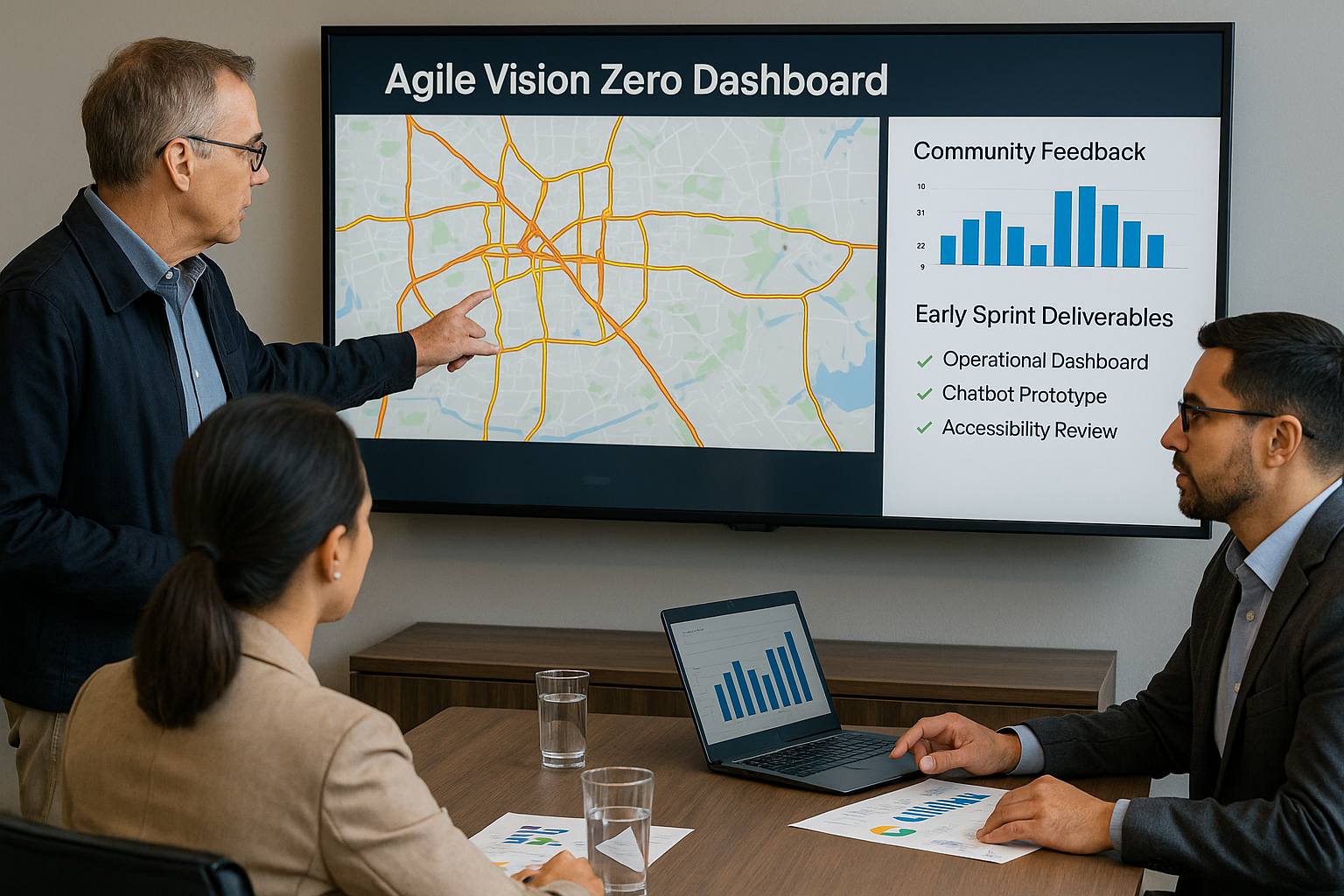Modernization in the public sector is often portrayed as a single transformative event, a moment when a new system is unveiled, celebrated, and set into motion. In practice, transformation is rarely instantaneous. It is the cumulative effect of a series of well-executed, strategically aligned steps. Agile, when applied with governance-level discipline, is the framework that makes these steps deliberate, measurable, and value-generating from the outset.
In our recent proposal for a municipal Vision Zero initiative, we outlined how this principle of “early wins” could be operationalized in a real-world, compliance-sensitive, community-facing program. While the project is still in the proposal phase, the structure we recommended reflects the same approach we have successfully applied to other AI-enabled modernization efforts.
The Challenge
The municipality’s goal was to reduce traffic-related fatalities and serious injuries through a data-driven Vision Zero program. Achieving this required integrating a diverse set of inputs:
- Traffic engineering data from multiple departments.
- Real-time community feedback from online and in-person channels.
- Accessibility assessments to ensure equitable outcomes for all road users.
The risk was clear: with so many inputs, and so many potential changes in legislation, funding, and community priorities, a traditional fixed-timeline approach could lock the program into outdated assumptions before its first deliverable reached the public.
The Agile Proposal
Our plan reframed the modernization not as a monolithic rollout, but as a sequence of targeted, outcome-focused sprints. The first sprints would concentrate on integrating and analyzing community engagement data, producing an interactive prototype that municipal leaders could review within the first project cycle.
From there, subsequent sprints would incorporate traffic engineering datasets, layered with AI-driven analytics to identify high-risk areas and prioritize interventions. Accessibility reviews would run concurrently, allowing for immediate design adjustments to meet compliance and equity standards.
Crucially, each sprint would culminate in a tangible, functional increment, whether a refined data visualization, an operational dashboard, or a pilot version of a public-facing portal. These increments would be deployed into a controlled environment for testing, stakeholder review, and real-world data collection.
The Early Wins Framework
By structuring the program this way, the municipality could demonstrate visible progress within weeks rather than years. Early wins included in the proposal framework:
- Operational Tools for Decision-Makers: Interactive dashboards providing near real-time insights for traffic planning teams.
- Enhanced Public Engagement: A multilingual, AI-assisted chatbot to field community inquiries and gather structured feedback.
- Compliance Confidence: Documented accessibility validations embedded into each sprint cycle, creating a defensible record for oversight bodies.
These wins were not just symbolic. They were designed to produce measurable outcomes, reduce decision-making lag, increase the accuracy of intervention targeting, and improve stakeholder confidence, which would compound over the life of the program.
Why It Matters
In public sector programs, early wins are more than morale boosters. They are political capital, proof points for funders, and trust signals to the communities served. They also mitigate the risk of large-scale failure by allowing course corrections before significant resources are expended.
By proposing an Agile delivery model, we demonstrated how the Vision Zero modernization could remain responsive to emerging data, evolving policy mandates, and community needs, without sacrificing strategic direction or compliance rigor.
Conclusion: The Power of Iterative Impact
The Vision Zero proposal illustrates a core truth of modernization: impact is maximized when transformation is delivered in a sequence of intentional, evidence-based steps. Agile’s capacity to produce early wins transforms modernization from a high-risk leap into a series of controlled, value-generating advances.
Whether in traffic safety, public health, or other mission-driven initiatives, this approach builds momentum, protects investments, and creates the adaptive capacity necessary for long-term success.
Related Reading: Agile at Halyard Consulting: A Strategic Framework for AI-Enabled Transformation

Leave a Reply